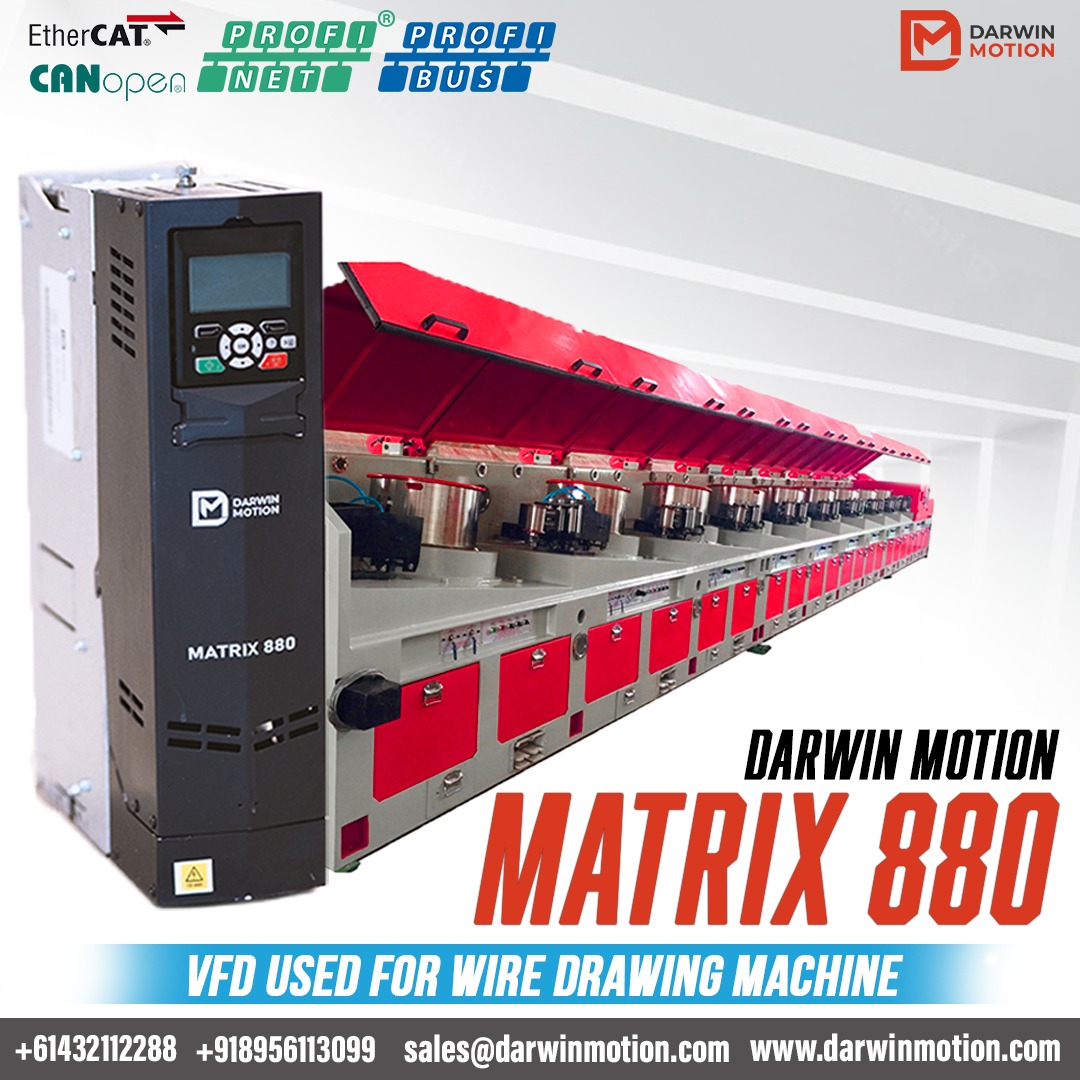Posted on 4th May 2024

Variable Frequency Drives (VFDs) have been a game-changer in the realm of industrial automation, offering precise control over motor speed and energy efficiency. As technology advances, so do the trends shaping the landscape of VFDs. From enhanced connectivity to increased focus on sustainability, here are the top eight trends driving innovation in Darwin Motion VFDs:
Integration with IoT and Industry 4.0: VFDs are increasingly becoming integral components of IoT ecosystems and Industry 4.0 initiatives. By connecting VFDs to the Internet, industries can gather real-time data on motor performance, energy consumption, and maintenance needs. This connectivity enables predictive maintenance, remote monitoring, and optimization of energy usage, leading to improved operational efficiency.
Energy Efficiency and Sustainability: With growing environmental concerns and stringent regulations, there's a heightened focus on energy efficiency and sustainability. Modern VFDs are designed with advanced algorithms and energy-saving features to minimize power consumption during operation. Additionally, VFD manufacturers are incorporating sustainable materials and practices into their production processes to reduce the environmental footprint of their products.
Digital Twin Technology: Digital twin technology involves creating virtual replicas of physical assets, including VFDs and the systems they control. By simulating VFD performance in a digital environment, engineers can optimize settings, predict failures, and test new control strategies without disrupting operations. This trend enhances reliability, reduces downtime, and facilitates continuous improvement in VFD applications.
Plug-and-Play Installation: Traditional VFD installations often require extensive wiring and configuration, leading to longer downtime and higher installation costs. However, modern VFDs are embracing plug-and-play functionality, allowing for quick and easy installation without the need for complex wiring or specialized expertise. This trend streamlines deployment, reduces labor costs, vfd drive price and accelerates time-to-market for industrial projects.
Advanced Motor Control Algorithms: VFDs rely on sophisticated control algorithms to regulate motor speed and torque accurately. Recent advancements in motor control technology have led to the development of algorithms that optimize efficiency, reduce harmonics, and enhance dynamic performance. These algorithms enable smoother operation, greater precision, and improved overall system performance.
Multi-Level and Matrix Converters: Multi-level and matrix converters are emerging as alternatives to traditional VFD topologies, offering higher efficiency and improved power quality. By utilizing multiple voltage levels or matrix configurations, these converters can mitigate voltage distortion, reduce switching losses, and enhance reliability. This trend is particularly relevant in applications requiring precise control and high power density, such as renewable energy systems and electric vehicles.
Cybersecurity Measures: As VFDs become more interconnected, they also become vulnerable to cyber threats such as hacking, malware, and data breaches. To address these concerns, VFD manufacturers are implementing robust cybersecurity measures, including encryption, authentication, and intrusion detection systems. By safeguarding against cyber attacks, these measures protect critical infrastructure and ensure the integrity of industrial processes.
Customization and Modular Design: Industrial applications vary widely in their requirements, from simple pump control to complex motion control systems. To accommodate diverse needs, VFD manufacturers are offering customizable and modular designs that allow for flexibility in configuration and scalability in performance. This trend enables tailored solutions for specific applications, reduces unnecessary complexity, and optimizes cost-effectiveness.
In conclusion, the evolution of VFD Drive technology is driven by a combination of factors, including connectivity, energy efficiency, digitalization, and security. By staying abreast of these trends, industries can harness the full potential of VFDs to improve productivity, reduce costs, and achieve sustainability goals in the era of smart manufacturing.